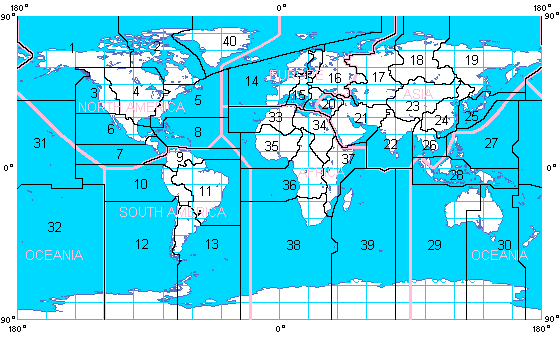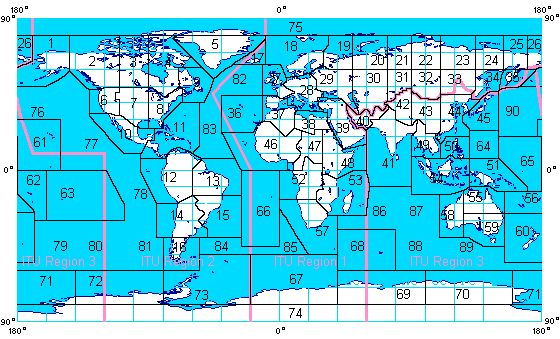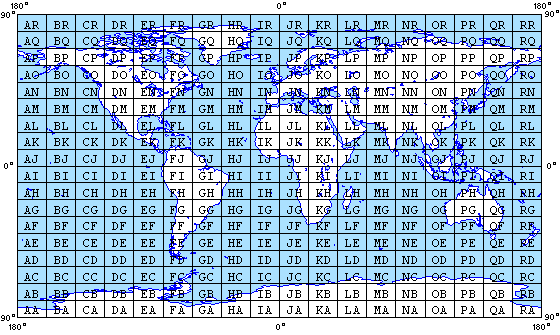QTH
There are multiple systems in use for identifying location (QTH) using zones or grid squares.
Zone systems
A number of systems exist to divide the world into zones and regions. In some cases, the divisions and numbering schemes are arbitrary, as with the CQ Zone and ITU Zone systems often used to identify a station's location on QSL cards.
CQ Zone
The CQ Zone system, originally devised by CQ Magazine, divided the world into forty arbitrary zones.
ITU Zone
The ITU Zone system, devised by the International Telecommunications Union, is similar but uses 89 zones in three regions. Region 1 is Europe and Russia, Region 2 includes all of the Americas, Region 3 is Australia and southern Asia.
Grid squares
QRA Locator
IARU/Maidenhead Locator
The IARU Locator (also known as the QTH Locator or Maidenhead Locator System) is based on a division of the globe, by latitude and longitude, into an 18 x 18 grid with origin (AA) at (90°S, 180°W). The system is based on the WGS84 co-ordinates and each 10° latitude x 20° longitude field is in turn divisible into a 10 x 10 array of "squares", each 1° x 2° in size. Each of these may then be further divided into "subsquares", using a 24 x 24 array.
The resulting code is sent as two letters (field), followed by two numbers (square) and optionally two more letters (subsquare). For instance, (0°N, 0°W) would be abbreviated as JJ00aa.
As lines of longitude converge to the north and south poles, the divisions created by this system are not, in fact, square. They may appear to be rectangular on some maps, depending on the projection used.
External links
- All about locators, SARL
- [www.qrz.ru/vhf/qth_h.pdf The locator system], QRZ.ru
- Online Maidenhead QTH locator, F6FVY
| Operating procedures | |
| Operation | Callsigns and ITU prefixes * Codes and Alphabets * Modes * Morse code * Nets * UK licensing * Terminology |
| DX and Contesting | Awards and Certificates * DXCC * DX cluster * Field day * Gridsquares * Logging * QSL and QSL Bureaus * Records - Distance |
| Emergencies | Emergency Frequencies * ARES * IRESC * SATERN * Weather spotting |
| QRP | Trail-Friendly Radio |
| Utilities | Beacons (/B) and Time Beacons |


